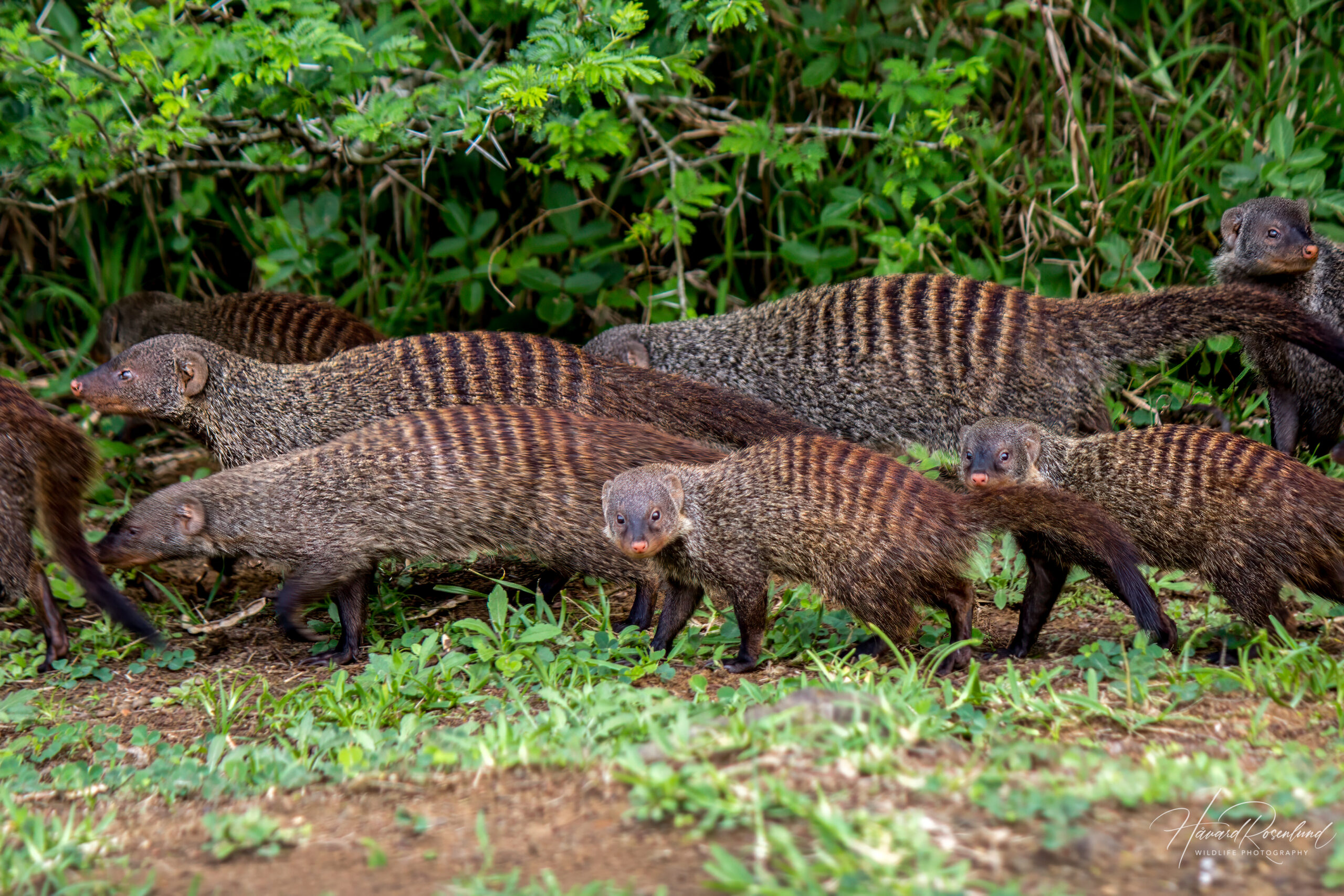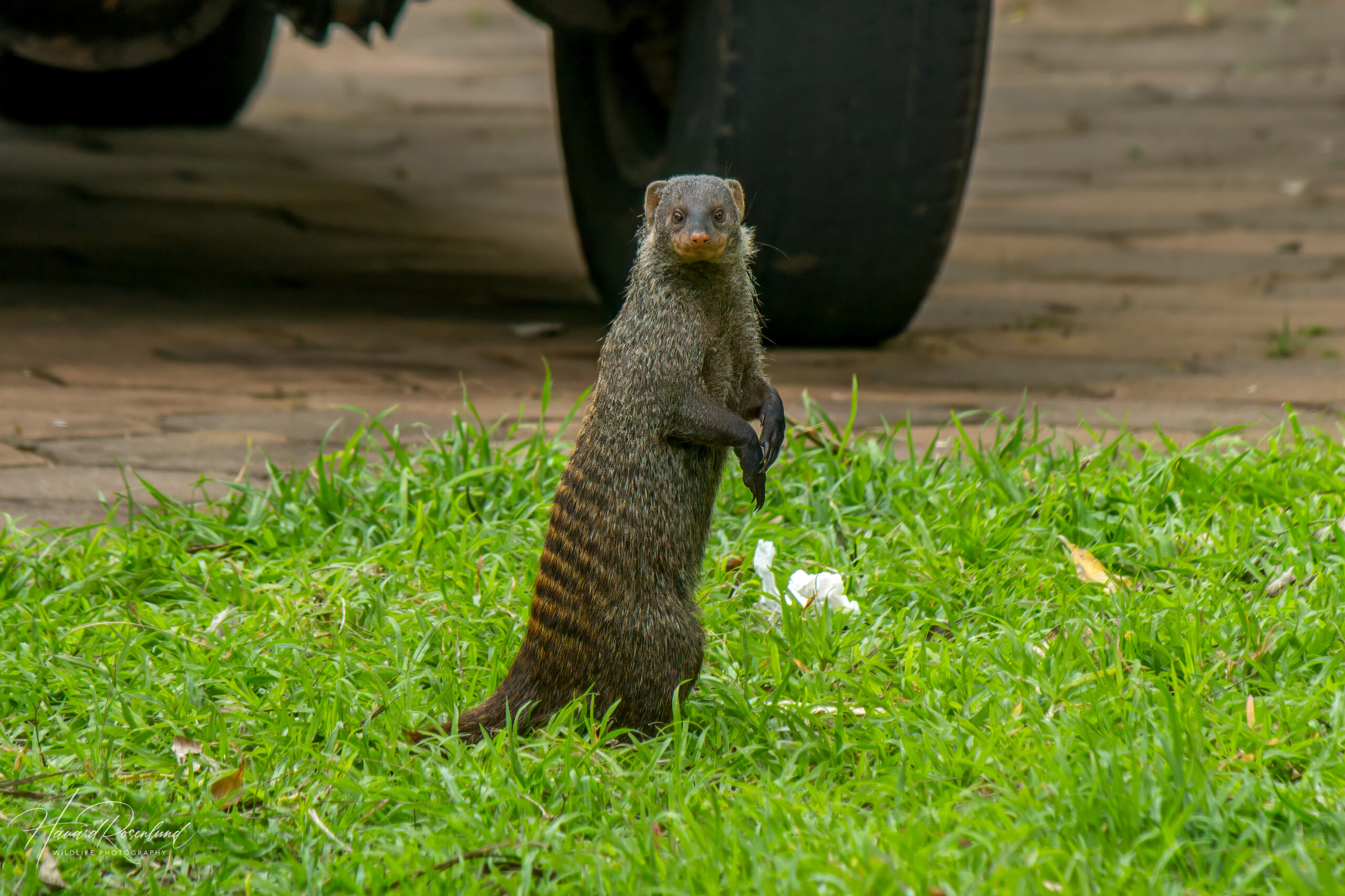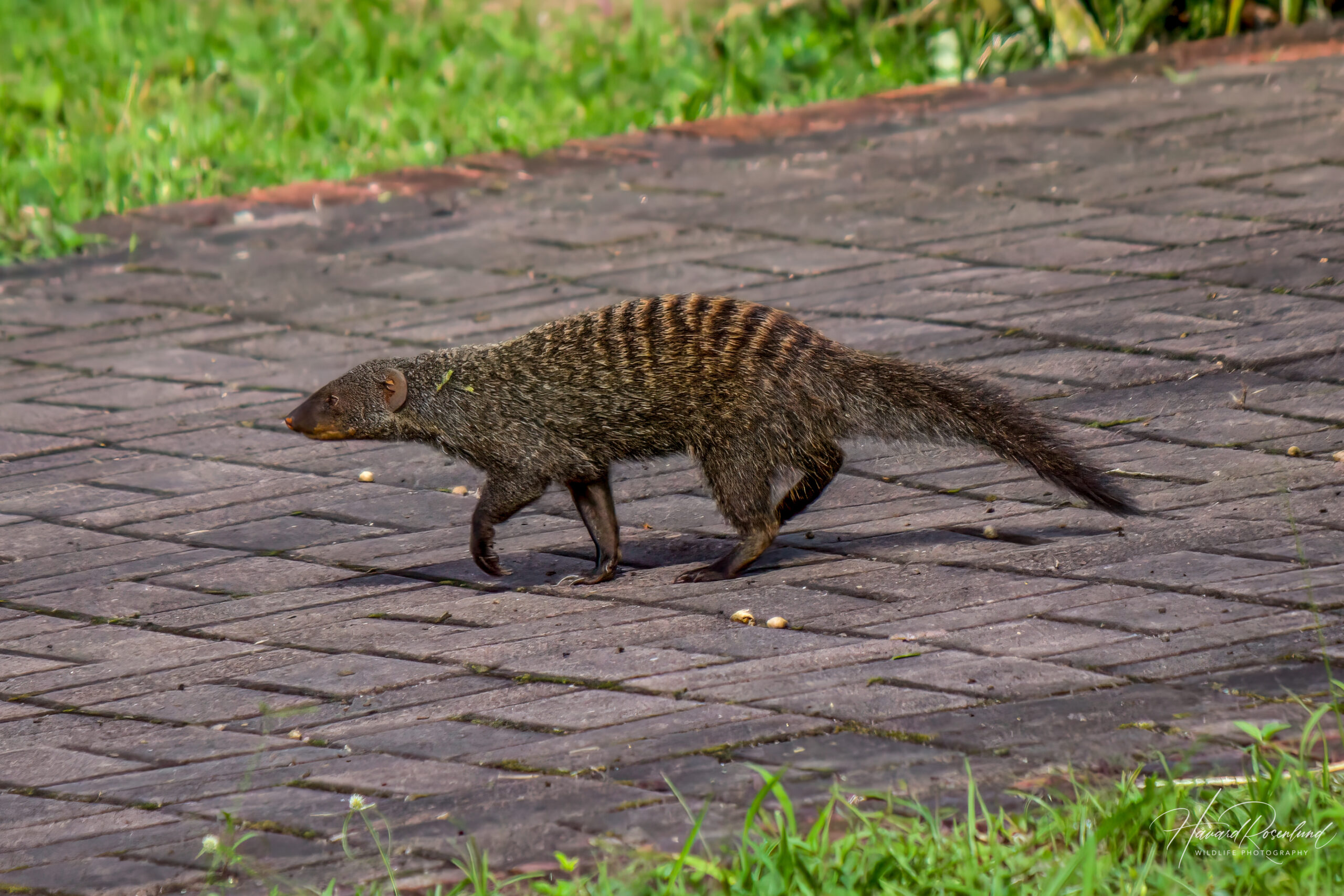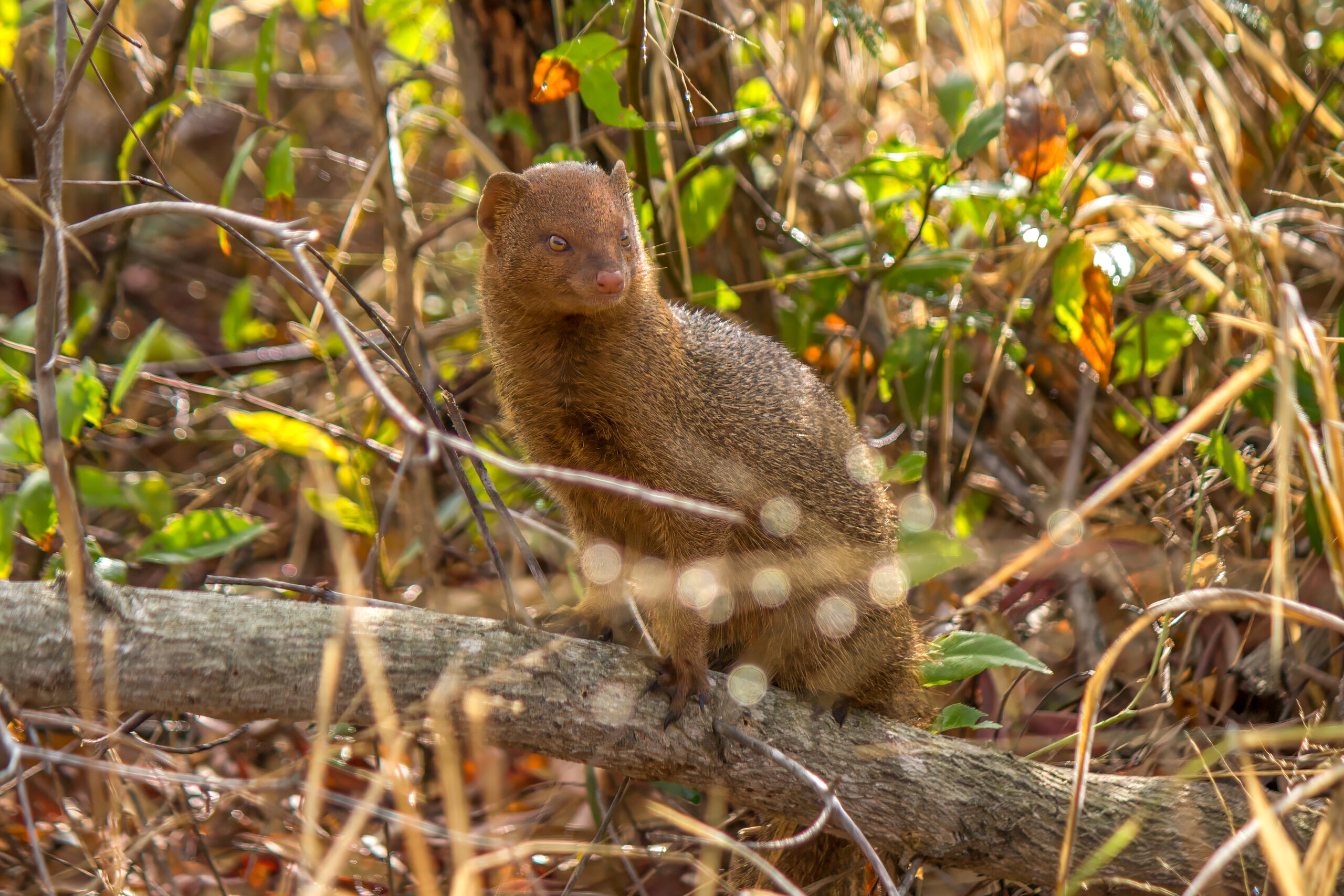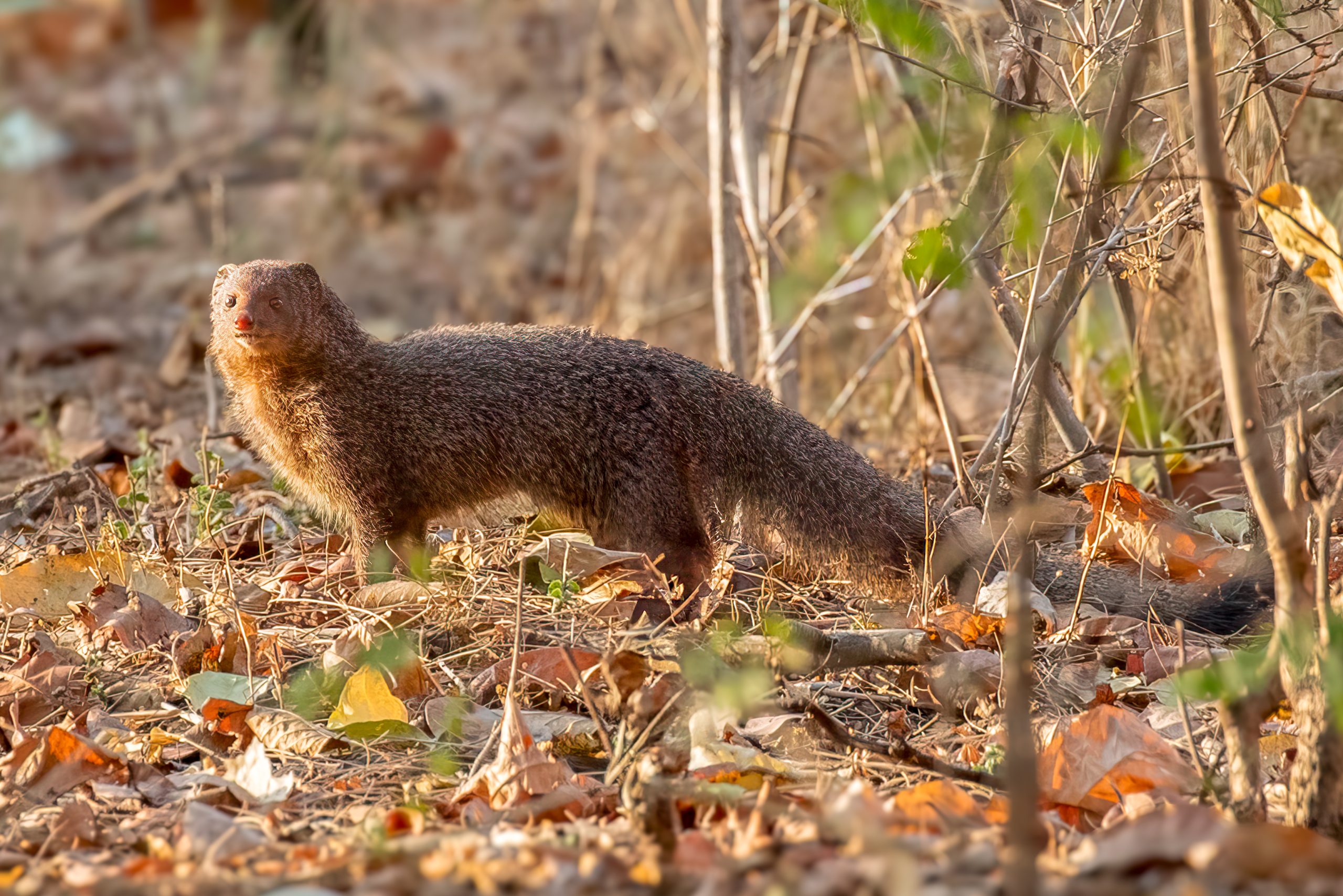Description
The banded mongoose (Mungos mungo) is a social mongoose species commonly found in many areas in sub-Saharan Africa. Like all mongooses it has short legs and a long body and tail. Its color varies from dark brown in wetter areas to a lighter color in drier areas. It has several characteristic stripes on its back. On its feet it has long strong claws adapted for digging. Banded mongooses can reach a body length of 30-45 cm (12-17.5 in) and weigh 1.5-2.25 kg (3.3-5 lb.). The tail can reach 15-30 cm (6-12 in).
Habitat
Banded mongooses prefer open habitat and are often found in savanna, open forests, and grasslands. Being close to water is preferred, but they can also be found in drier areas. They live in dens, and abandoned termite mounds are commonly used for housing purposes. They can also utilize various other forms of shelter, such as rock formations, thickets, and gullies. One group will have multiple dens within their territory and will normally stay at one site for two to three days.
Social behavior
The banded mongoose is one out of only three social mongoose species and lives its whole life in groups of 7-40 individuals. Average group size is close to 20. Individuals within a group are rarely aggressive towards one another and there is no strict hierarchy. With females, dominance is based on age. Older females will get into estrous earlier as well as get larger litters. When a group is too large older females and males will chase away subordinate females. These females are then forced to start a new group alongside subordinate males. Aggression between males is only shown during mating season. When rivaling groups of banded mongooses meet, violent fights often break out. These fights can lead to death and serious injuries for individuals. During such territorial disputes it is not uncommon for females in estrous to mate with males from the rivaling group.
Diet & feeding habits
A group of banded mongooses will forage together but will catch and eat prey individually unless they are faced with larger adversaries, such as venomous snakes. Individuals normally feed on invertebrates, small reptiles, and birds. They will also eat eggs from both birds and reptiles. They do most of the foraging during the early hours of the morning and in the late afternoon. They will rest in the shade during the hotter hours. A banded mongoose will use its sense of smell to track down prey and will use its long claws to dig it out from holes in the ground or in trees. It is not uncommon to find banded mongoose close to large herbivore dung as it attracts dung beetles and other invertebrate prey.
Here is a video of a group of banded mongooses foraging:

Reproduction
Female banded mongooses go into estrous just ten days after giving birth and one to three dominant males will try to guard these females from competing males as well as mate with them. Dominant males will get to mate with most females and will spend 2-3 days with each female. However, some females will try to escape the dominant male to mate with other males of the group. Although guarding males can be very aggressive towards other males, some subordinate males have employed a strategy where they follow a pair of mating individuals. These males have to deal with the constant harassment from the guarding male, but they will pick their moment and sneak inn to mate with the female unnoticed.
Gestation period is 60-70 days and most females in a group will give birth within a few days of one another. They get two to six pups, with four being an average litter size. Young stay in the den for the first four weeks and will be guarded by one to three babysitters. When old enough to venture out of the den pups will have adult escorts that will protect them and aid them in their foraging. Young will often follow their escort while constantly begging for food using high-pitched squeaks. They will usually stay with their escort until they reach independence.
Status
Banded mongoose is a widespread and common species in Africa and is found in high numbers in many protected areas. They are highly adaptable and can also live close to human habitation. Their numbers are high and stable, and the species is listed as least concern on the IUCN Red List.






